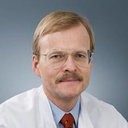Dizziness and near syncope due to sinus bradycardia and sinoatrial block associated with obesity and daytime tiredness. A clear indication for pacemaker implantation?
Atslēgvārdi
Abstrakts
BACKGROUND
The symptomatic sick sinus syndrome presents a classic indication for the implantation of a dual-chamber pacemaker according to the current national and international guidelines. However, in cases where dizziness and near syncope due to a sinus node dysfunction are found together with clinical characteristics of a sleep apnea-hypopnea syndrome (SAHS), screening for sleep apnea would be prudent before deciding for a pacemaker.
METHODS
The case report presented herein describes a patient with symptomatic sinus bradycardia and second-degree SA block with a Wenckebach periodicity, in whom the primary decision to implant a pacemaker was altered in favor of treatment with nCPAP (nasal continuous positive airway pressure) because after a careful and thorough evaluation of the patient's history and symptoms, a severe mixed SAHS was diagnosed.
CONCLUSIONS
On diagnosing SAHS with an obstructive component in patients with symptomatic bradycardia and SA block, there is no primary need for a pacemaker, but rather for implementing treatment with nCPAP. Thus, a pacemaker should only be considered in patients with intolerance or bad compliance regarding nCPAP, or in those in whom no significant reduction of bradyarrhythmia is achieved.


